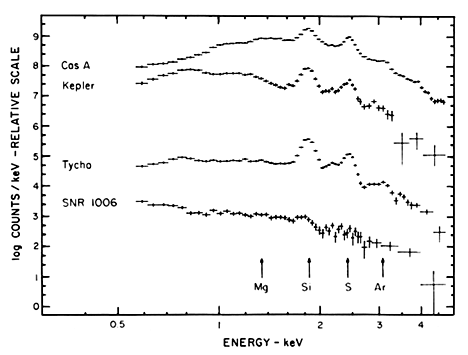X-ray spectra of several supernova remnantsX-ray spectra from the Einstein Solid State Spectrometer (SSS), which reveals the composition of the stellar ejecta most clearly. Prominent emission lines from silicon and sulphur can be seen, at abundances greater than solar material (although there is no overabundance of iron apparent). These medium-weight elements were probably generated in the supernova explosion itself, during which significant nucleosynthesis is known to occur. Also visible are weaker lines from magnesium, argon, and calcium. These lines are direct observations of the material from the disrupted star and indicate that emission is thermal radiation from a gas heated to a temperature of several million degrees. Courtesy of A. Szymkowiak (GSFC). Reproduced from figure 3-10 in Charles and Seward.
IMAGES |
By Mission |
Stars |
HEASARC Home | Observatories | Archive | Calibration | Software | Tools | Students/Teachers/Public Last modified: Thursday, 26-Jun-2003 13:48:44 EDT |


